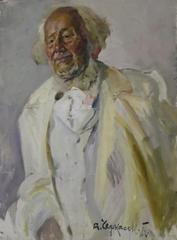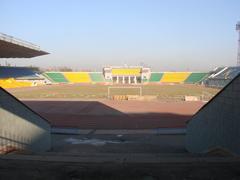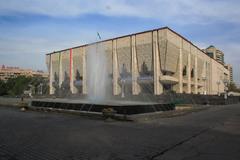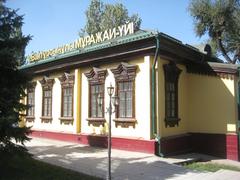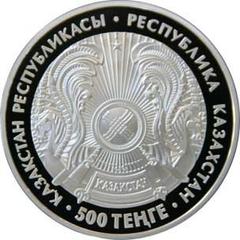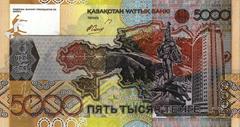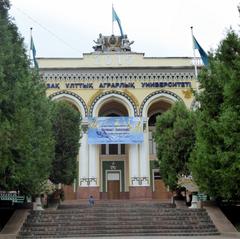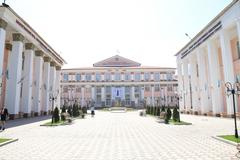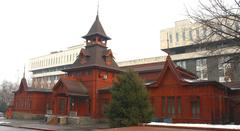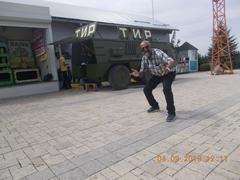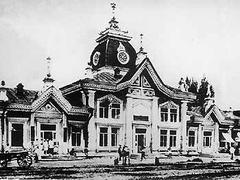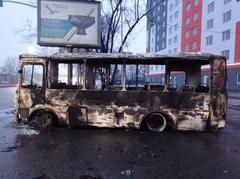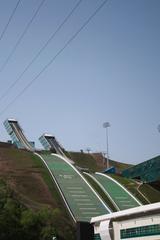
Vernenskaya Women’s Gymnasium Visiting Hours, Tickets, and Historical Site Guide in Almaty, Kazakhstan
Date: 04/07/2025
Introduction
Nestled in the historical center of Almaty, the Vernenskaya Women’s Gymnasium is a landmark of educational progress and architectural distinction. Established in 1904 during the Russian Imperial era, it was among Central Asia’s first formal educational institutions for women, reflecting significant strides in gender equality and social mobility. Designed by the acclaimed architect Andrei Pavlovich Zenkov—also responsible for the iconic Ascension Cathedral—the gymnasium is a prime example of eclectic classicism, seamlessly blending Russian imperial influences with innovative wooden construction techniques suited for the region’s seismic activity.
Today, as part of the Abai Kazakh National Pedagogical University, the building continues its educational mission while standing as a testament to Almaty’s layered history and vibrant cultural identity. This guide provides a detailed overview of the gymnasium’s history, architecture, visiting logistics, and its broader cultural significance within Almaty.
For up-to-date details, refer to Almaty Historical Reserve, Abai Kazakh National Pedagogical University, and the Almaty City Tourism Office.
Table of Contents
- Introduction
- Historical Background
- Architectural Features
- Visiting Information: Hours, Tickets & Tips
- Cultural, Social & Educational Significance
- Visitor Information & Nearby Heritage Sites
- Suggested Heritage Itinerary
- Frequently Asked Questions (FAQ)
- Conclusion
- References
Historical Background
Almaty, formerly Verny, has a rich history as a Silk Road crossroads and a Russian imperial outpost. Founded as a military fort in 1854, Verny quickly developed into a multi-ethnic town and provincial capital. By the early 20th century, it was an educational and cultural hub, with the Vernenskaya Women’s Gymnasium at the forefront of reforms to expand opportunities for women (Britannica; Walking Almaty).
The gymnasium’s founding reflected both imperial modernization efforts and local aspirations for progress. After the Russian Revolution, the city transitioned through Soviet rule—becoming Alma-Ata, capital of the Kazakh SSR, and later, Almaty, a modern metropolis after independence in 1991 (Nomad Not Mad; Almaty Zhasulan).
Architectural Features
Design and Materials
The gymnasium embodies the eclectic classicism style, with a symmetrical plan, decorative stucco, semi-circular windows, and wooden construction using Tien Shan spruce beams (welcome.kz). Zenkov’s expertise in seismic engineering made the building both aesthetically distinctive and structurally resilient.
Exterior and Interior
- Exterior: Classical symmetry with ornate moldings, pilasters, and porticos.
- Woodwork: Exposed beams and cornices highlight local craftsmanship.
- Interior: High ceilings, broad corridors, and ample natural light create a welcoming educational environment, even after modern refurbishments.
- Seismic Resilience: The flexible wooden frame, a Zenkov hallmark, allowed the building to survive the region’s major earthquakes (en.wikipedia.org).
Visiting Vernenskaya Women’s Gymnasium: Hours, Tickets & Travel Tips
Location & Access
- Address: 31 Tole Bi Street, Almaty, Kazakhstan
- Public Transport: Accessible via city buses, the Almaty Metro (Zhibek Zholy station), or taxi (Almaty Metro Guide; Bucketlistly Blog)
- Nearby Landmarks: Close to Panfilov Park and Zenkov Cathedral
Visiting Hours & Tickets
- Hours: Typically open to the public from 10:00 AM to 5:00 PM, Tuesday–Sunday. Closed Mondays and holidays. Hours may change; check in advance.
- Tickets: Viewing the exterior is free. Guided tours—required for interior access—may incur a fee (500–1,000 KZT). Book in advance through tour operators or the university (Almaty City Tourism Office).
Facilities & Accessibility
- Facilities: Limited—restrooms available, but no on-site café or gift shop.
- Accessibility: Some barriers due to historic design; limited wheelchair access. Contact ahead for accommodations.
- Photography: Permitted outside; interior photography generally restricted without permission.
Best Time to Visit
- Season: June–September offers pleasant weather (Wanderlog), with fewer crowds in spring and autumn.
- Time of Day: Early mornings or late afternoons are ideal for photos and cooler temperatures.
Language & Guided Tours
- Signage: Mostly in Kazakh and Russian; English-speaking guides recommended (Bucketlistly Blog).
Safety & Etiquette
- Dress modestly.
- Use official taxis/rideshares.
- Respect access restrictions and privacy of students/staff.
Cultural, Social & Educational Significance
Women’s Advancement
The gymnasium was Central Asia’s first institution for women, empowering girls through academic and arts education (eurasia.travel). Its alumni contributed to teaching, medicine, and public life, shaping modern Kazakh society.
Architectural Heritage
As a rare surviving example of pre-Soviet educational architecture, the gymnasium’s eclectic classicism and seismic engineering are integral to Almaty’s historic landscape (eurasia.travel).
Cultural Continuity
Today, the building houses the Art and Graphics Faculty of the Abai Kazakh National Pedagogical University, hosting exhibitions, workshops, and public events, ensuring its continued relevance (university site).
Community and Urban Memory
The gymnasium, along with nearby landmarks like the former Men’s Gymnasium and S. Begalin Republican State Children’s Library, forms a heritage network central to Almaty’s identity (eurasia.travel).
Exploring Nearby Historical Sites
- Ascension Cathedral (Zenkov Cathedral): Masterpiece of wooden architecture, open daily (Bucketlistly Blog).
- Panfilov Park: WWII memorial park ideal for strolling (GoKite Tours).
- Central State Museum: Comprehensive displays on Kazakh history (MakeMyTrip).
- Green Bazaar: Local foods and crafts (Bucketlistly Blog).
- Kok-Tobe Hill & Medeu Skating Rink: Panoramic views and recreation (GoKite Tours; Turkish News World).
Suggested Heritage Itinerary
- Morning: Vernenskaya Women’s Gymnasium, Zenkov Cathedral, Panfilov Park
- Midday: Central State Museum, Green Bazaar lunch
- Afternoon: Almaty Central Mosque or First President’s Park
- Evening: Kok-Tobe Hill sunset
Frequently Asked Questions (FAQ)
Q: How do I arrange a tour inside the gymnasium?
A: Contact the university or local tour operators in advance.
Q: Is there an admission fee?
A: Exterior viewing is free; fees for guided tours depend on the provider.
Q: Is the building accessible for visitors with disabilities?
A: Accessibility is limited; inquire in advance for accommodations.
Q: Can I take photos inside?
A: Exterior photos are permitted; interior photography may require permission.
Q: What language support is available?
A: Guides are available in English through tour providers; signage is mostly in Kazakh and Russian.
Conclusion
The Vernenskaya Women’s Gymnasium is more than a historical building—it embodies Almaty’s evolution, Kazakhstan’s commitment to education and gender equality, and the resilience of its urban identity. Its architectural beauty, storied past, and ongoing role in cultural life make it a must-see for visitors seeking to understand Almaty’s heritage.
For the latest on hours, tickets, and events, consult Abai Kazakh National Pedagogical University, the Almaty City Tourism Office, and the Almaty Historical Reserve. Enhance your visit further with the Audiala app for guided tours and interactive maps.
References
- Historic Maps of Verny, Alma-Ata, and Almaty – Walking Almaty
- Almaty Historical Reserve – Welcome.kz
- Architectural Reserve – Eurasia Travel
- Almaty City Tourism Office
- Abai Kazakh National Pedagogical University
- Best Things to Do in Almaty – Bucketlistly Blog
- Top Tourist Attractions in Almaty – GoKite Tours
- Discovering the History and Significance of Almaty – Turkish News World
- Places to Visit in Almaty – MakeMyTrip
- Almaty in July – Wanderlog

